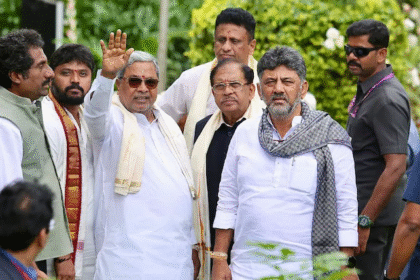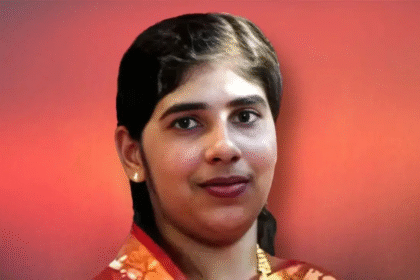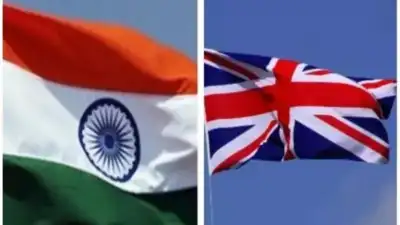Navi Mumbai International Airport – India’s 1st Fully Digital Airport Inaugurated by PM Modi
Navi Mumbai International Airport, India’s 1st fully digital airport, inaugurated by PM Modi. A game-changer in aviation
Prime Minister Narendra Modi inaugurated 𝐃𝐁 𝐏𝐚𝐭𝐢𝐥 𝐍𝐚𝐯𝐢 𝐌𝐮𝐦𝐛𝐚𝐢 𝐈𝐧𝐭𝐞𝐫𝐧𝐚𝐭𝐢𝐨𝐧𝐚𝐥 𝐀𝐢𝐫𝐩𝐨𝐫𝐭 today, October 8. With this, Mumbai joins the list of a handful of cities across the world featuring multiple airports, including London, New York and Tokyo. As Navi Mumbai airport navigates its path to become an international transit hub, like Dubai International Airport or Singapore Changi International Airport, the state-of-the-art airport is expected to begin commercial operations two months later, in December.
The Navi Mumbai International Airport, which will be India’s first fully digital airport, was inaugurated today by PM Narendra Modi.
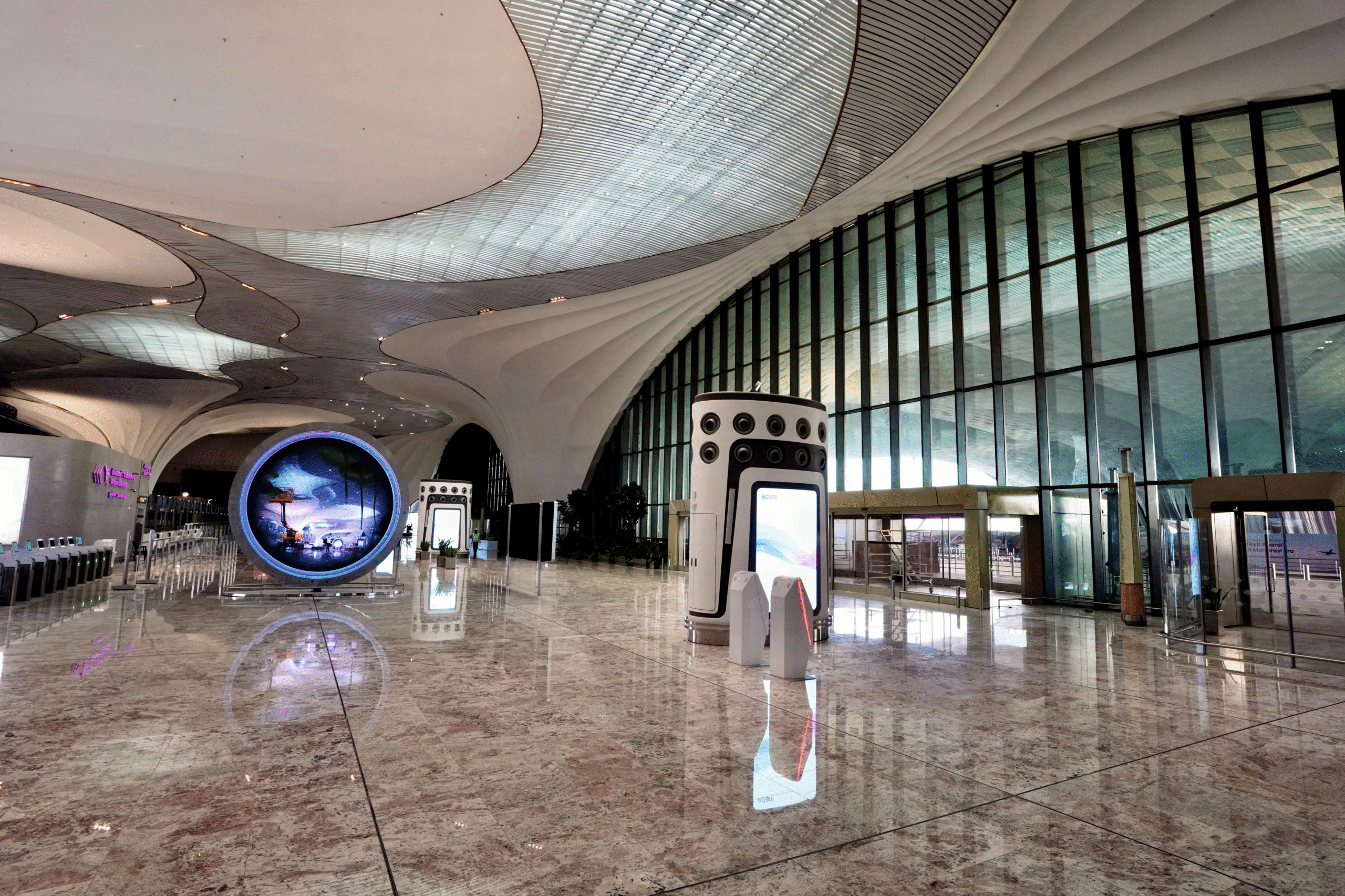
Built at a cost of ₹19,650 crore, it is expected to boost real estate growth, tourism, trade and green innovation. Furthermore, it is projected to generate over two lakh jobs across sectors, including aviation, logistics, IT, hospitality, and real estate.
Among the notable amenities offered at the newly constructed airport, it is supported by a fully automated and AI-enabled terminal. includes facilities for pre-booking vehicle parking slots, online baggage drop and immigration services.
Featuring lotus inspired architectural design, airy and modern ambience, it uses large glass façades, open spaces, and natural lighting.
Even though one terminal and runway are in the initial phase, the 1,160-hectare airport has the ability to handle around 20 million passengers annually. With fully finctional four terminals and two runways, the airport will be able to handle 155 million passengers at full capacity.
IndiGo, Air India Express, and Akasa Air and several other airlines have already shared plans to start operations, connecting cities across the country.
With about 40 percent international traffic, commercial operations will commence in December. According to officials, the airport will initially operate for 12 hours daily with international traffic eventually rising to 75 percent.
Chief Executive Officer (CEO) of Adani Airports Holdings Ltd (AAHL), Arun Bansal, described the Navi Mumbai airport as an “anxiety-free airport.” Praising its automation and digital facilities, he said, “We are experimenting with AI-enabled baggage tracking in Ahmedabad, and here, you will be able to get a message on your phone telling you, for example, that your bag is number 20 on the carousel.”
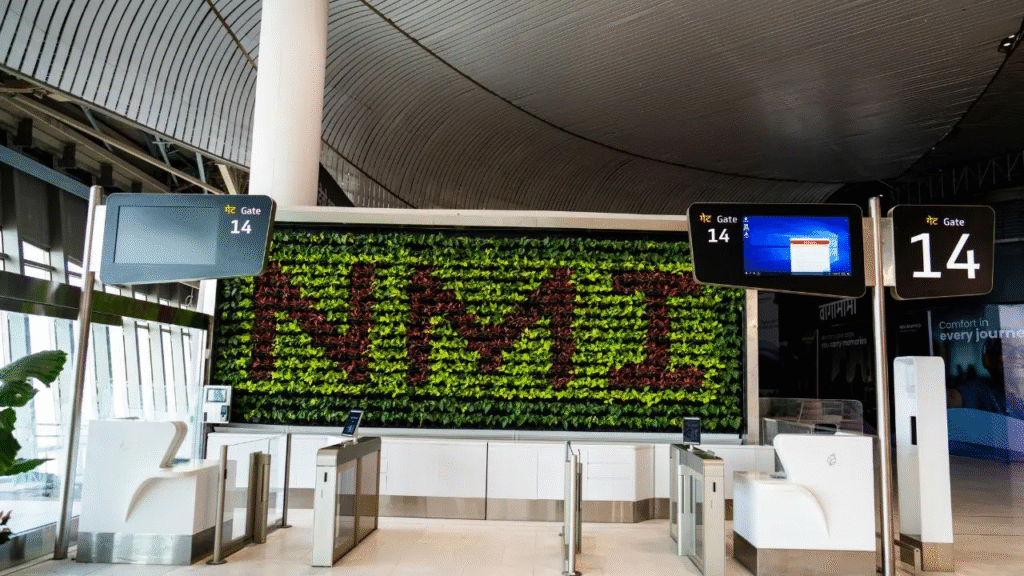
It will serve as India’s first major aviation hub linking several transport systems, including expressways, metro and suburban rail networks and waterway services.
The Navi Mumbai airport was built under a public-private partnership between CIDCO (City and Industrial Development Corporation of Maharashtra Ltd) and Adani Airport Holdings.
The aviation landscape of India is witnessing a bold leap today. Prime Minister Narendra Modi inaugurates the Navi Mumbai International Airport (NMIA) — India’s first fully digital airport. This landmark project is being hailed as a paradigm shift in air travel, combining smart infrastructure, sustainability, and seamless passenger experience. Below are 10 powerful facts you must know:
Navi Mumbai International Airport is set to be India’s first airport to operate fully digital from launch. Expect paperless check‑in, automated immigration, online baggage drop, and AI‑driven systems to streamline every touchpoint of travel.
Built under a public‑private partnership between Adani Airport Holdings and CIDCO, NMIA has cost a staggering ₹19,650 crore — a clear statement of intent in India’s aviation modernization.
Spanning 1,160 hectares, the airport in Phase 1 will handle 20 million passengers annually. Once fully developed—with 4 terminals and 2 runways—it’s projected to scale up to 155 million passengers per annum.
The terminal draws inspiration from the lotus flower, featuring petal‑like structural elements, large glass facades, and open spaces that embrace natural light.

Inside, travelers will be greeted by digital art installations, interactive exhibits (telling Maharashtra’s story), and special zones like a children’s play area in the domestic departure sections.
Backed by a 5G-enabled network and IoT infrastructure, NMIA will deliver real-time monitoring, predictive maintenance, and integrated operations across terminals, airside, and utilities.
The airport also adopts Digi Yatra for contactless entry, security, and boarding—no manual document checks. An AI‑enabled baggage tracking system ensures passengers receive live updates (for example, bag number on the carousel) via mobile apps.
NMIA aims to generate 47 megawatts of solar power, deploy electric vehicles for ground operations, implement rainwater harvesting, wastewater recycling, and energy‑efficient fixtures.
To combat climate risks, the airport is elevated 8.5 meters above ground level to guard against floods, cloudbursts, and extreme weather.
NMIA is designed as a multimodal hub. It will be connected via expressways, metros, suburban rail—and uniquely, a water taxi service (first for an Indian airport).
Future plans include Metro Line 8 linking CSMIA (Mumbai airport) to NMIA, and extensions of metro lines to integrate with the broader Mumbai network.
Major carriers like IndiGo, Akasa Air, and Air India Express have committed to starting operations from NMIA in Phase 1.
Initially, the airport will operate 12 hours a day (8 AM to 8 PM), with capacity for 10 air traffic movements per hour, ramping up to 40 as systems mature.

In early operations, Air India Express plans 20 daily departures, connecting 15 cities.
IndiGo is also planning 18 daily flights at launch, expanding rapidly.
This project is expected to generate over 200,000 jobs across aviation, logistics, IT, hospitality, and real estate sectors.
In cargo, the airport aims to handle 0.8 million tonnes initially, with eventual expansion to 3.25 million metric tonnes annually in full capacity.
The airport is proposed to be named Loknete D.B. Patil Navi Mumbai International Airport, honoring the late Dinkar Balu Patil, a leader who advocated for land rights and equitable resettlement of project‑affected people.
Its official IATA code is “NMI”.
Read Also : Punjabi Star Rajvir Jawanda Dies at 35 — Tragic End Just Days After Horrific Road Accident Shocks Millions




